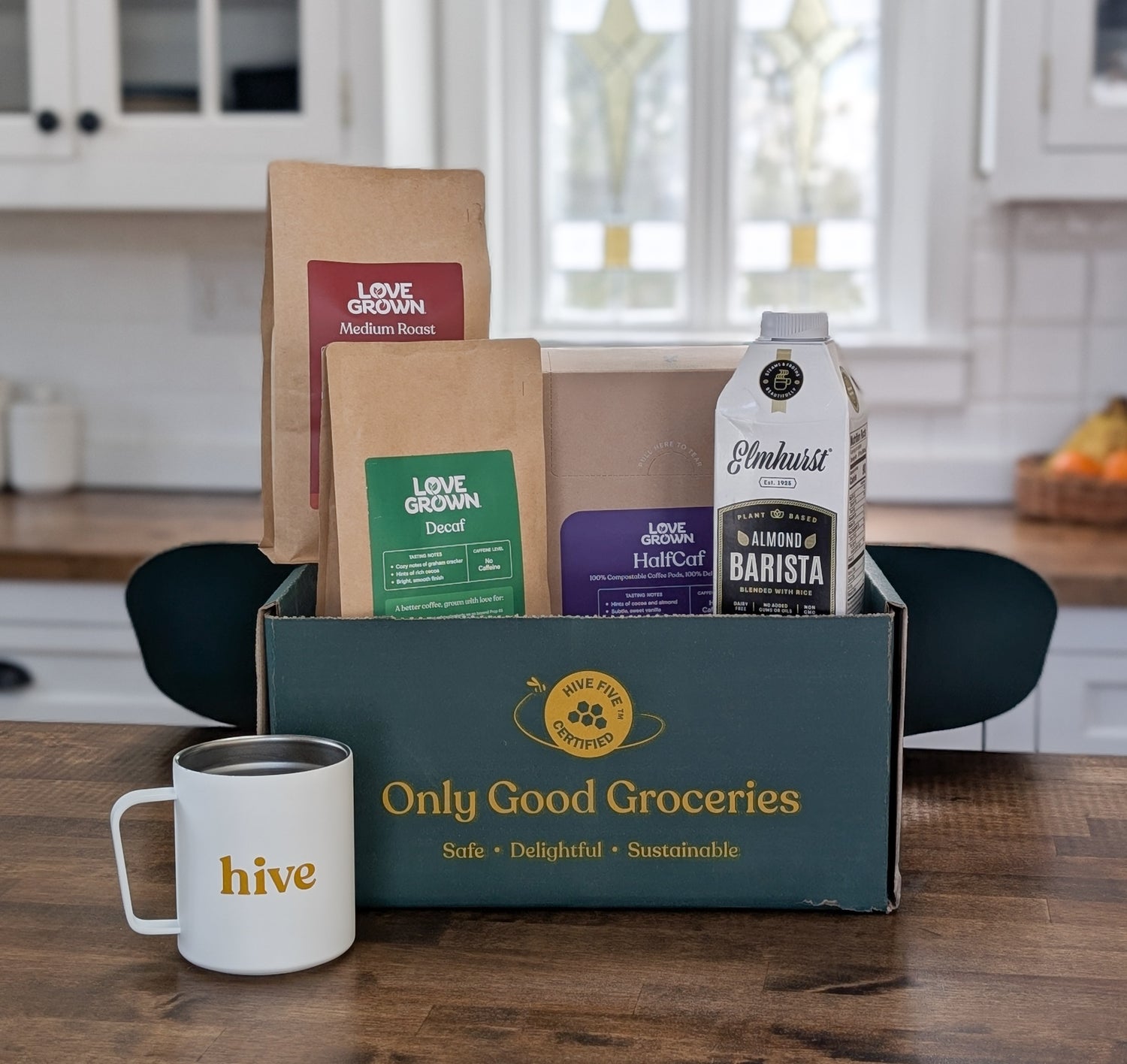But 2021 has been a different story. Emissions have rebounded in the largest single-year rise in over a decade, thanks to industries making up for lost time and life returning to a tentative normal. And like many remote workers, I live 1,500 miles in either direction from work and family, and I’m writing this piece while flying halfway across the country. Yet, while business trips and family vacations do require huge amounts of fossil fuels, the worst emitters are a select group of corporations and their wealthy owners (hello, billionaire space race), as well as massive, and massively important, global industries like agriculture.
As for Hive? We do our best by using recyclable shipping materials and fully offsetting all of our shipments (aka anything you order). And fortunately, Hive also offsets all business travel, so my air travel will help fund a forest conservation project in my home state through our partnership with Cloverly. It’s not a perfect system, but it’s also not a space flight.

Yep, food is part of the problem
Even if you rely on nothing but your own two feet to travel to your local grocery store, food has a carbon footprint before it even leaves the shelf. How it’s grown, where it’s grown, what it’s packaged in, if it needs to be refrigerated or frozen, how it was transported from the farm to the store, and if it’s a plant or an animal can all contribute to a food product’s impact on the environment and the global climate at large. The Environmental Protection Agency estimates that the entire agricultural sector is responsible for at least 10% of anthropogenic greenhouse gas emissions, though the number is likely much higher. Carbon dioxide, methane, and nitrous oxide are among the gases produced by a wide range of foods and growing practices, from cow belches to the over-application of nitrogen fertilizers to slash-and-burn deforestation for increased cacao production.
But wait! Food is a necessary part of the solution
Before you spiral into a state of guilt and anxiety over your favorite fair-trade chocolate bar, agriculture can also sequester carbon. Plants and animals are carbon-based life forms after all. Agricultural practices like agroforestry, cover cropping, and rotational grazing support greater biodiversity of plants and soil microbes so that ecosystems ultimately intake and store more carbon than they release. These regenerative practices have been around for thousands of years, and they’re finally getting the recognition they deserve within the modern food industry.

Meat vs. Mushrooms: A Biology Refresher
In addition to growing methods, the types of foods produced can also lower food systems’ overall climate impacts. Responsible livestock production does provide certain ecosystem benefits. However, because of their higher trophic level, animals undeniably need more land, water, and other resources than plants do as individual organisms. Don’t believe me? Animal products currently take up over 80% of the world’s farmland and contribute over half of agriculture’s total emissions, yet they only provide a third of the world’s protein and a fifth of total calories. I love bacon as much as the next person, but the proof is in the pudding: meat for every meal is not the most environmentally efficient way to feed the world.
Every effort counts
Of course, all this is not to say that plants can’t have outsized carbon footprints as a result of processing, packaging, and transportation. That’s where operational efforts like energy-efficient manufacturing facilities, recycled and recyclable packaging materials, and carbon offset credits can help further reduce a food product’s overall greenhouse gas emissions. Hive’s brand partners excel at using these and other climate-conscious practices.

